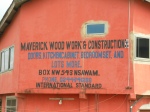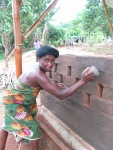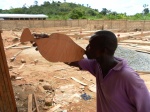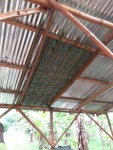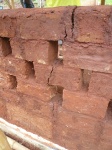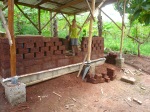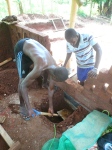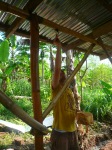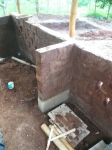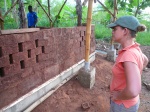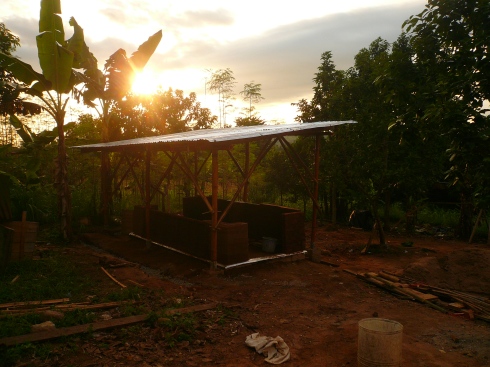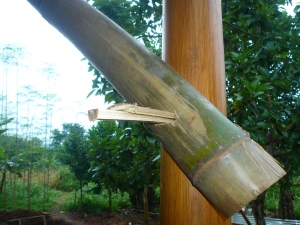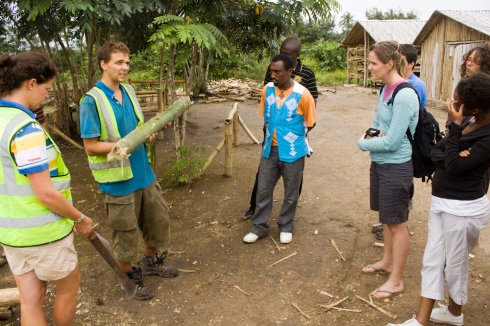On Thursday a wide range of thinkers and practitioners from various backgrounds came together in Accra for the Local Vs Global International Symposium to discuss strategies for sustainable development in the face of rapid growth. After the many months of planning and long hours of organisation the day was a great success. The various guest speakers sparked lively and engaging discussion throughout the day. As well as being an opportunity for many organisations to meet and share their knowledge, the purpose of the day was to start new conversations and partnerships that we hope will continue on and act as a catalyst for a more common agenda within the sector.
A full write up of the day including each participant’s presentations will follow, but below are the key themes from each speaker:

1. Symposium Introduction – Major Mustapha Ahmed (rtd.)– Deputy Minister for The Ministry of Water Resources, Works and Housing
– When building houses we need to consider the environmental practical’s in Ghana; Land Provision, Accessibility, Infrastructure and Money
Session 1 – Sustainable Construction: Challenges and Opportunities
2. Ghana Green Building Council – Foster Osae-Akonnor
– There is no need to re-invent the wheel. Using sustainability rating tools on Ghana’s new buildings and want these to be wider implemented.
3. OS House – Samuel Bittir
– Using Local and Global materials to develop new construction ideas and find a meeting point of environmental, economic and social – designs are proving too radical and materials are undesirable for the Ghanaian market.
4. Sabre Charitable Trust – Charlotte King, Laurence Mensah, Steven Cole
– Increasing Building standards in Ghana through education and training
Session 2 – Creating Sustainable Livelihoods
5. VPWA – Hayford Siaw
– Economic sustainability has to be a primary consideration
6. INBAR (International Network of Bamboo And Rattan) – Micheal Kwaku
– De-forestation has left only 20% of Ghana’s natural forests – Teak takes 15 years to reach maturity, bamboo only 3-6 years
7. DENG – Ghana Institute of Solar Energy – Hans Kissieh
– The energy is flowing from above – lets go direct.
8. Mat-To-Fore – Gareth Selby, Chris Simmonds, (Sustainable design and Bio-gas Introduction)
– Re-define lifestyle by introducing simple things. Give rural poor of Ghana back their dignity
9. Building Roads and Research Institute (BRRI) – Frederick Wireko Manu, Joseph Agyei Danqua
– A paradigm shift needed – trying to develop solution to reduce the use of concrete
Session 3 – Mass housing Solutions
10. UN-Habitat – Cristophe Lalande
– Housing is more than houses. Understanding how the housing sector works is fundamental to develop strategies to prevent slum proliferation
11.1. Housing The Masses – Ellen Oteng Nsiah
– Multiple stake holders need to work together and use their combined skills to create affordable homes
11.2. Ministry for Water Resources, Works and Housing – Theresar Tufour
– Policy is Essential – New policy is bringing in all the stake holders
11.3. Habitat for Humanity – James Ayando
– Changing their ways as not currently having enough outreach – Don’t mange project but ensure community manage their own.
12. People’s Dialogue
– The burden of climate change is mostly on the poor – Development must involve the people it is for and use local knowledge
Final remarks
13. Architecture Sans Frontiers-UK – Anthony Powis, Ben Powell
– Working with communities not for them – and developing strategies to build on this symposium through the implementation of a platform through which we can continue to work together.

